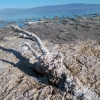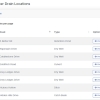
Stormwater infrastructure rarely captures the political spotlight, yet it is essential for public safety, economic stability, and regulatory compliance. Because major upgrades often outlast an elected official’s term, a 5-year CIP must be built to withstand changing administrations and shifting priorities. The goal is not just a plan but a durable roadmap that any incoming mayor, supervisor, or council can accept and continue.
Matches asset lifecycles and grant cycles. Many pipes and outfalls need rehabilitation every 20-50 years, but funding programs such as EPA’s Sewer Overflow and Stormwater Reuse Municipal Grants release allocations on multi-year timetables, so a rolling five-year horizon aligns nicely with both needs and opportunities. (epa.gov)
Spans at least two local election cycles. Providing clear year-by-year cash flows and milestone dates reduces the temptation to defer maintenance or raid funds for flashy short-term projects.
Allows annual recalibration without gutting the framework. A five-year plan can be updated each budget season while keeping the long-term logic intact.
Comprehensive asset inventory. Catalog every culvert, catch basin, pipe, and detention pond, noting condition, age, material, and failure consequences.
Risk-based condition scoring. Rank each asset for structural risk, flood exposure, water-quality impact, and regulatory urgency so that future leaders see an objective “scoreboard” instead of a political wish list.
Cost curves and lifecycle models. Estimate capital, O&M, and replacement costs so decision-makers understand total cost of ownership, not just initial price tags.
Transparent criteria. Weight factors such as public safety, flood reduction, MS4 or TMDL compliance deadlines, environmental justice, and economic development. Publish the scoring matrix online and revisit it only through a formal process. This transparency is one of the most effective antidotes to post-election plan rewrites. (envisio.com)
Scenario testing. Show how delaying a top-ranked project affects risk exposure and downstream costs. Leaders who grasp the trade-offs are less likely to hit the pause button for political reasons.
| Funding Tool | Election-Proof Features | Tips |
|---|---|---|
| Stormwater enterprise fund | Dedicated fee revenue is stable and cannot be diverted to unrelated programs. | Tie the fee to impervious area for equity and index it to inflation. |
| General-obligation or revenue bonds | Secures multi-year cash upfront, making it harder for future councils to cancel projects already under contract. | Align bond maturity with asset life. |
| State & federal grants/loans | Competitive awards often come with signed commitments that transcend local elections. | Track EPA’s OSG, SRF, and IIJA windows; May 2024 OSG grants totaled $41 million. (epa.gov) |
| Pay-as-you-go reserves | Supplements debt while keeping ratios healthy. | Establish a minimum reserve policy in the CIP ordinance. |
Adopt by ordinance or resolution. When the CIP is codified, any amendment requires a public vote, not a casual budget memo.
Tie to the comprehensive or master plan. Cross-referencing prevents future councils from approving land-use changes that undermine drainage priorities.
Include performance metrics in the budget book. OpenGov and similar tools let residents track schedules, costs, and milestones, sustaining public pressure for continuity. (opengov.com)
Engage neighborhood associations, business owners, and environmental groups through meetings, dashboards, and surveys. Communities that feel informed show more patience when projects extend beyond an election calendar, and elected officials gain cover to stay the course. (envisio.com)
Annual “state of the CIP” review. Update cost estimates and add new regulatory mandates, but keep project rankings unless objective criteria change.
Contingency allowances. A 10-to-20 percent contingency cushions unforeseen inflation, reducing the temptation to raid other projects mid-cycle.
Green infrastructure alternates. Document GSI options with life-cycle savings so future leaders can substitute permeable pavement or bioswales without scrapping the whole plan. EPA analysis shows green approaches can cut capital costs compared with gray-only solutions. (epa.gov)
Create a standing Stormwater CIP Steering Committee that includes public works, finance, planning, and at least one citizen representative. Stagger member terms so the committee’s institutional memory spans electoral changes.
A five-year stormwater CIP that survives elections is equal parts engineering, finance, and political science. Ground it in data, fund it with dedicated revenue, engrave it in policy, and cultivate community trust. With these safeguards, crucial drainage projects will keep moving from concept to ribbon-cutting, regardless of who occupies city hall.
 Wetlands are often described as the kidneys of the watershed because they filter, slow, and transform the water that passes through them in ways that …
Wetlands are often described as the kidneys of the watershed because they filter, slow, and transform the water that passes through them in ways that …
 Field inspections of catch basins, manholes, culverts, and outfalls form the foundation of responsible stormwater management. These routine checks giv…
Field inspections of catch basins, manholes, culverts, and outfalls form the foundation of responsible stormwater management. These routine checks giv…
 Habitat disruption around drainage structures is often subtle at first, and many of the earliest signs tend to appear during ordinary field work rathe…
Habitat disruption around drainage structures is often subtle at first, and many of the earliest signs tend to appear during ordinary field work rathe…
 Harmful algal blooms have become one of the most pressing water quality problems in many regions, and their rise has been linked to a complicated blen…
Harmful algal blooms have become one of the most pressing water quality problems in many regions, and their rise has been linked to a complicated blen…
 The Salton Sea is one of California’s most unusual and tragic landscapes, a place shaped by accident, transformed by ambition, and ultimately pu…
The Salton Sea is one of California’s most unusual and tragic landscapes, a place shaped by accident, transformed by ambition, and ultimately pu…
 *The screenshots used in this article are from Roadwurx, an asset management software created for road maintenance departments. Managing a town’…
*The screenshots used in this article are from Roadwurx, an asset management software created for road maintenance departments. Managing a town’…